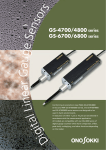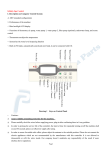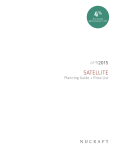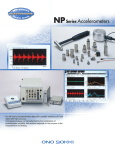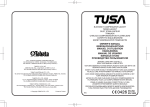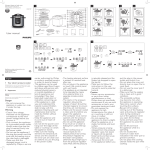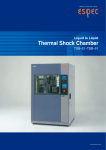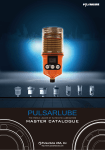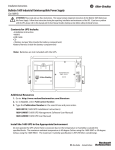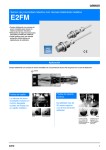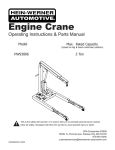Download BV-303/Suck-back type dispensing valve
Transcript
EQUIPMENT User Manual BV-303/Suck-back type dispensing valve Contents 1. Safety ··············································································································3 1.1 For your safety ····························································································3 1.2 Valve overuse harzard ················································································3 1.3 Others ·········································································································3 2. Specification ····································································································4 3. Principle ···········································································································4 4. Installation & Operation ················································································· 5 4.1 4.2 5. Connecting lines ······················································································· 5 Operation ···································································································5 Maintenance & Cleaning ·················································································6 5.1 5.2 5.3 5.4 5.5 Storing after use ·························································································6 Check items while operating ····································································· 6 Exploded view ··························································································· 6 Cleaning ···································································································· 7 List of spare parts ······················································································ 7 6. Trouble shooting ···························································································· 7 7. Outside view ····································································································8 2 1. Safety Before installation and using our dispensing valve BV-303, please be carefully aware of this user manual 1.1 For your safety If the fluid splashes up to your eyes or skin, it can cause a serious injury. Handle with extreme care not to be in contact with liquid in case of nozzle exchange or cleaning. Make sure that pressure must be released before the nozzle is removed when you exchange a nozzle. 1.2 Valve Overuse Hazard If a valve is damaged due to over-pressure, unauthorized alteration of parts, and overuse, it may cause a danger by exploding or leaking (explosion or leakage may occur). Do not make any kind of unauthorized alterations. We are not responsible for any repairs, after-sales service caused by them. This valve operates delivery air pressure under 7kgf/cm2. Do not exceed this operation pressure. The fluid pressure must not exceed 30kgf/cm2. Or it can cause serious damages and disorder. 1.3 Others High pressure material can be leaked if a hose is damaged or worn. Check a hose for any worn-downs, damages, or swollen before use. Please change a hose immediately if any malfunction is found. Prevent leakage from loosened joints by tightening before use. 3 2. Specification Method of Operation Material of wetting part Volume Type of Operation Liquid Input Applied Materials Maximum fluid pressure Output variation Suck-back A6061 8ℓ/min A,B PT 1/8” Epoxy Silicone, Urethane, Engine oil Low & Middle Viscous Materails 30 kg/cm2 ± 2.0 % 3. Principle The valve open air pressure forces the internal piston to move down, and the sealing head to open and permit fluid flow. When the valve close air pressure forces the internal piston to move up, and the sealing head closes, stopping the fluid flow and pulling back a slight amount of fluid. The amount of fluid dispensed will depend on the time the valve is open, the viscosity of the fluid, the air pressure in the fluid reservoir and the dispensing tip size. Flow rate is a function of reservoir pressure, tip size and fluid viscosity. Suck-back type valves have a sneakhead at the starting point due to the different of the space which is get the piston head moves down. And the valve is suitable for large amount per shot. Close Open 4 4. Installation & Operation 4.1 Connecting Lines 1) Connecting Air-pressure lines - Straightly insert the tube into the air fitting until it gets installed inside - Valve open line(A) is connected to the “open” port on the TAD-200V(controller). - Valve close line(B) is connected to the “air out” port on the TAD-200V(controller). - Pull the tube gently in order to make sure that it is safe. 2) Connecting Fluid Line - The inlet of Fluid line(C) fits in PT 1/8” line. 3) Caution - When you cut the tube, make the severed side a right angled out and the use of a tube-cutter is recommended. - Install the fluid line in oblique with the air line in order to minimize the intervention. A B C D 4.2 Operation 1) Preparing to use - Open the fluid line and valve open air line(A) of the valve. - Keep dispensing until the consistent drippings in order to eleminates the air in the valve. - And then stop dispensing. 2) Control of the dispensing volume - Adjust the pressure of fluid inlet. - Change the nozzle tip(D) to be compatible to preventing from air bubbles. 5 5. Maintenance & Cleaning 5.1 Storing after use - To avoid the nozzle tip contact air, put an end-cap on the nozzle or keep a nozzle in the grease. - Perform the cleaning process(see Chapter 5.4). 5.2 Check items while operating - Make sure that air supply is in good condition. - Check other connecting appliances that are properly turned off. - Be sure that end of nozzle is not clogged with hardened fluid. 5.3 Exploded view - The user’s arbitrary disassembly is not recommended. 1 2 3 4 5 6 7 8 Fluid outlet tip adapter Holder cap Outlet seal Stop pin Body casing O-ring housing O-ring Plate seal BS A6061 Teflon SUS303 A6061 Teflon P4 Teflon 9 10 11 12 13 14 15 Joint nut Stop nut O-ring O-ring Piston O-ring End cap BS BS P8 P18 SUS303 P22 A6061 6 5.4 Cleaning - Stop providing liquid and release pressure in the fluid chamber. - Connect the cleaning line to fluid inlet port and add pressure. - According to chapter 4.2, dispense cleaning liquid instead of fluid. 5.5 List of spare parts No. 3 4 6 7 Name Outlet seal Stop pin O-ring housing O-ring P4 No. 8 11 12 14 Name Plate seal O-ring P8 O-ring P18 O-ring P22 6. Trouble shooting Item No dispensing Cause Treatment Stop pin(4) does not work. Supply the air into valve on/off line. The fluid is cured. Clean the valve.(see chapter 5.4) The fluid does not supply. Pressure the fluid reservoir. Supply the fluid. Fluid leakage from nozzle(1) The controller is turned off. Turn on the controller. The needle adaptor(1) is unfasten. The lifetime of outlet seal(3) is end. The joint nut(9) is unfasten. Clean the valve.(see chapter 5.4) And then replace outlet seal(3), fasten the adapter(1). Fluid leakage from Joint nut(9) The lifetime of o-ring housing(6), o-ring(7) and plate seal(8) is end. The stop pin(4) is worn out. Clean the valve.(see chapter 5.4) And then replace o-ring housing(6), o-ring(7) and plate seal(8), fasten the joint nut(9). Replace the stop pin(4). 7 7. Outside view 8








